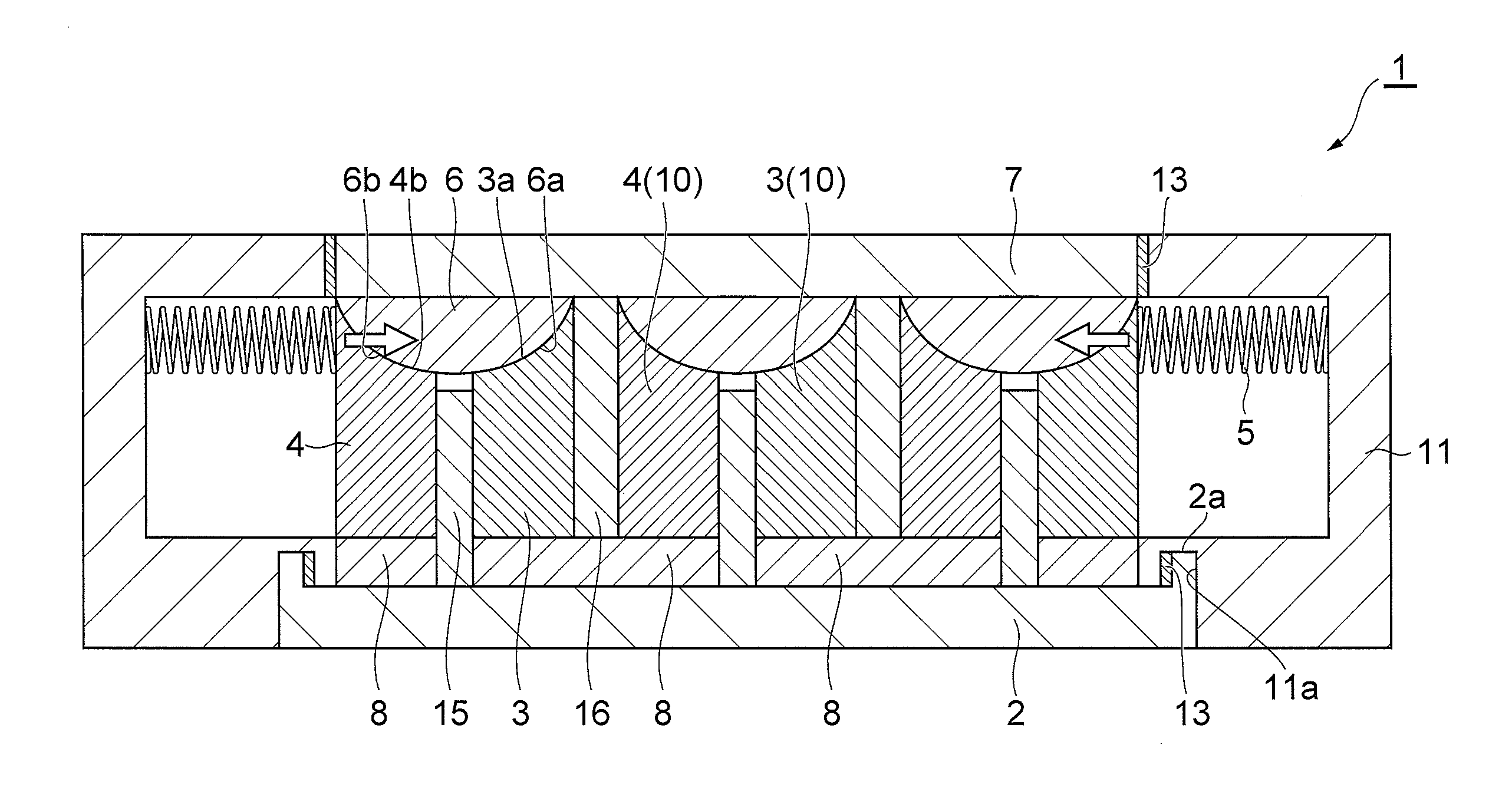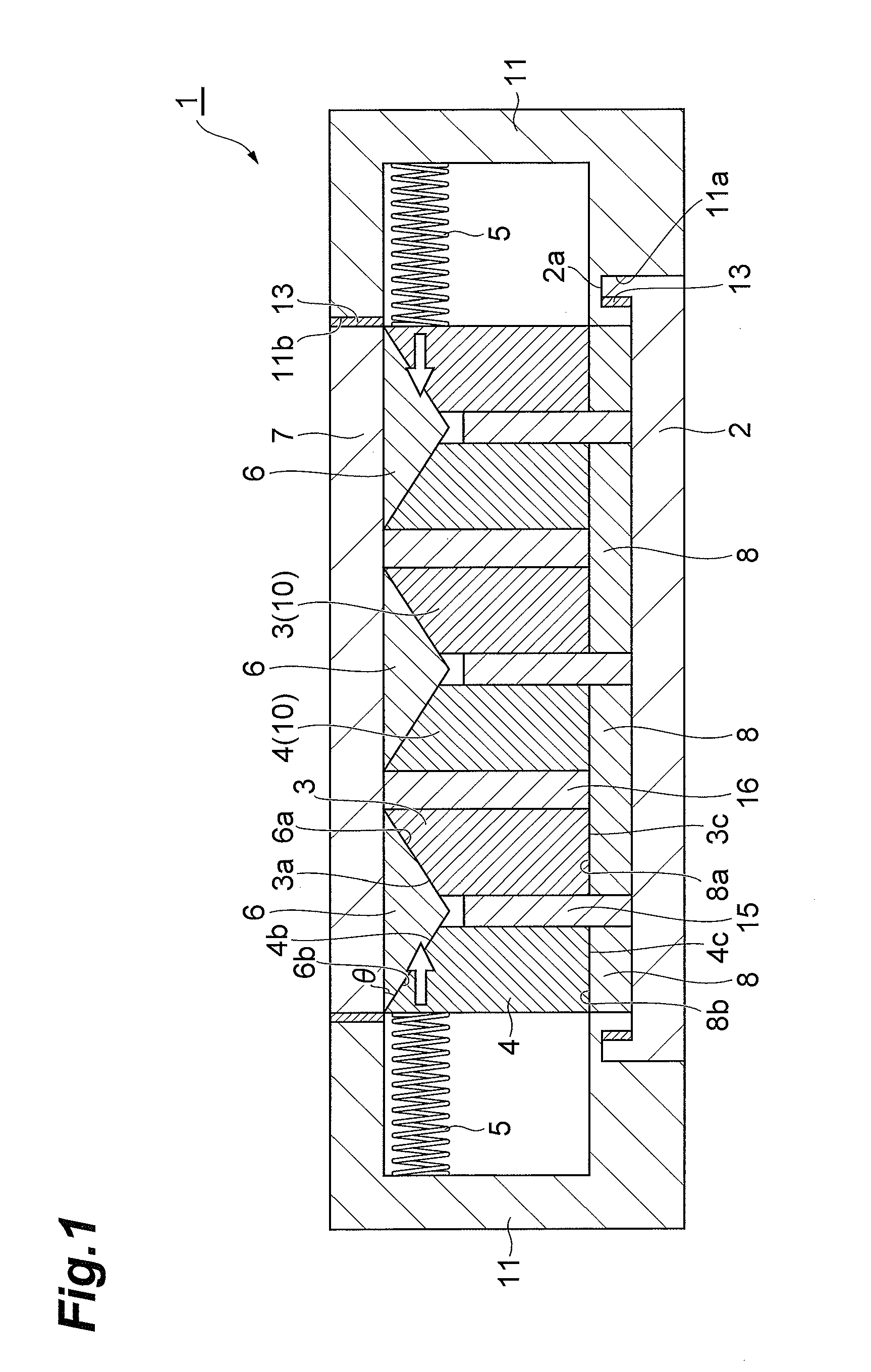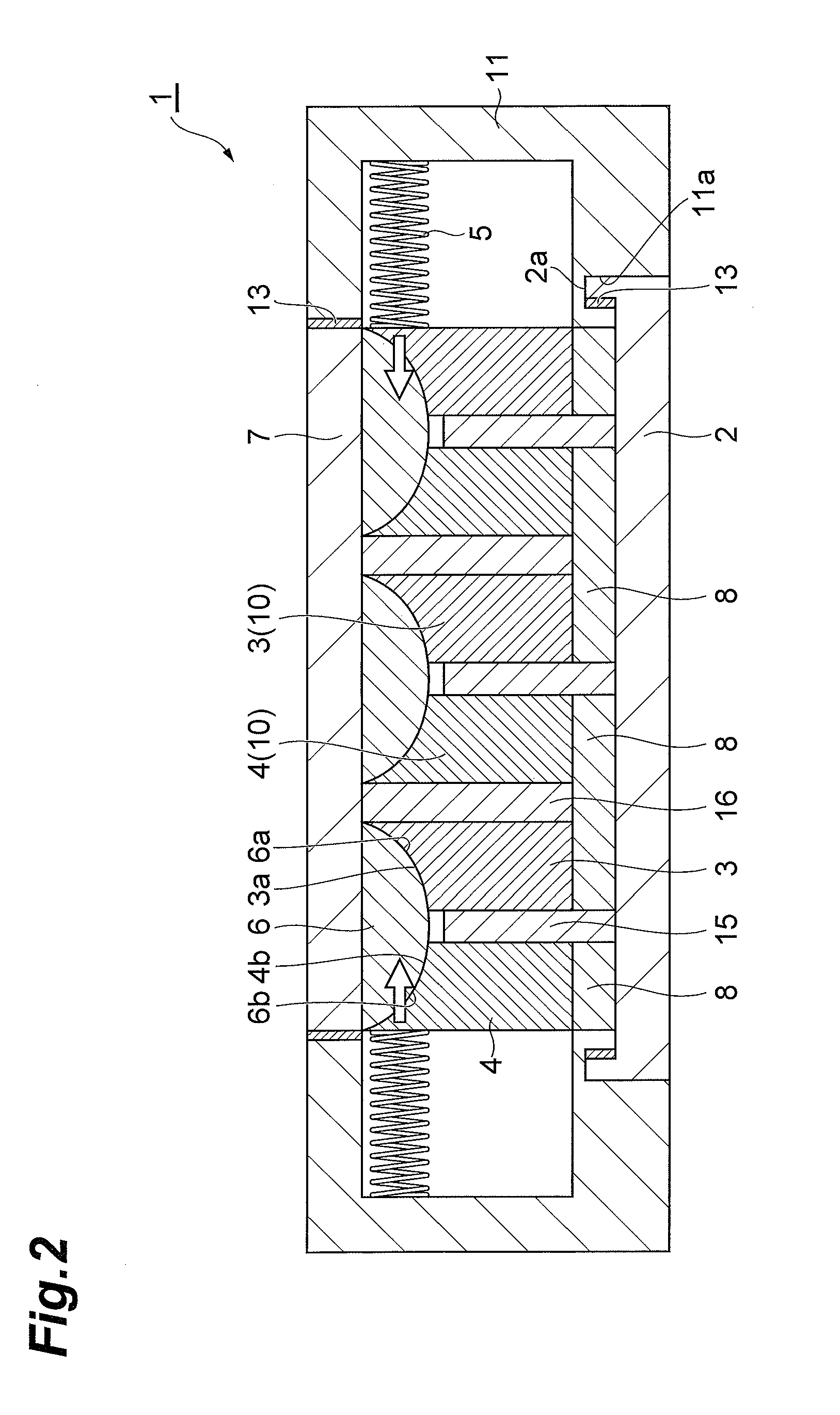Thermoelectric Conversion Module
a technology of thermoelectric conversion module and thermoelectric converter, which is applied in the direction of photovoltaics, electrical apparatus, and semiconductor devices, can solve the problems of binding portion breakage, and achieve the effects of preventing heat dissipation, reducing thermoelectric conversion efficiency, and preventing pressing damag
- Summary
- Abstract
- Description
- Claims
- Application Information
AI Technical Summary
Benefits of technology
Problems solved by technology
Method used
Image
Examples
first embodiment
Thermoelectric Conversion Module of First Embodiment
[0022]FIG. 1 is a schematic cross-sectional view of the thermoelectric conversion module according to the first embodiment. The thermoelectric conversion module 1 is provided with a thermoelectric conversion section having a lower-temperature side substrate 2, a higher-temperature side substrate 7, lower-temperature side electrodes 6, higher-temperature side electrodes 8, p-type thermoelectric conversion elements 3, n-type thermoelectric conversion elements 4, insulating members 15, and insulating members 16, pressing members 5, and substrate holding members 11.
[0023][Thermoelectric Conversion Section]
[0024]In the thermoelectric conversion section, the lower-temperature side substrate 7 and the higher-temperature side substrate 2 oppose to each other and are arranged approximately in parallel. The lower-temperature side electrodes 6 are arranged in a non-cemented state on the surface of the lower-temperature side substrate 7 opposi...
second embodiment
Thermoelectric Conversion Module of Second Embodiment
[0061]The following will describe the thermoelectric conversion module of the second embodiment shown in FIG. 2. The thermoelectric conversion module of the second embodiment is different from the first embodiment in that the slope faces 6a, 6b of the lower-temperature side electrodes 6 are not flat faces but convex faces and, corresponding thereto, the faces 3a of the p-type thermoelectric conversion elements 3 and the faces 4b of the n-type thermoelectric conversion elements 4 are concave faces. As shown in FIG. 2, in the case where the slope faces of the lower-temperature side electrodes 6 are convex faces, the steric shape of the lower-temperature side electrodes 6 is, for example, a semispherical shape, or a shape obtained by cutting a circular cylinder by a plane parallel to its axis.
[0062]Here, that the angle of each slope face 6a, 6b of the lower-temperature side electrode 6 with respect to the surface of the lower-tempera...
third embodiment
Thermoelectric Conversion Module of Third Embodiment
[0063]The following will describe the thermoelectric conversion module of the third embodiment shown in FIG. 3. The thermoelectric conversion module 1 of the third embodiment is different from the first embodiment in that the slope faces 6a, 6b of the lower-temperature side electrodes 6 are not flat faces but concave faces and, corresponding thereto, the faces 3a of the p-type thermoelectric conversion elements 3 and the faces 4b of the n-type thermoelectric conversion elements 4 are convex faces. As shown in FIG. 3, in the case where the slope faces of each lower-temperature side electrode 6 are concave faces, the steric shape of the lower-temperature side electrode 6 is, for example, one having a pair of grooves of an arc-like cross section, or one having a pair of semispherical concave faces. In the third embodiment, each pressing member 5 presses the thermoelectric conversion element 10 through a spacer 17.
[0064]Here, that the ...
PUM
 Login to View More
Login to View More Abstract
Description
Claims
Application Information
 Login to View More
Login to View More - R&D
- Intellectual Property
- Life Sciences
- Materials
- Tech Scout
- Unparalleled Data Quality
- Higher Quality Content
- 60% Fewer Hallucinations
Browse by: Latest US Patents, China's latest patents, Technical Efficacy Thesaurus, Application Domain, Technology Topic, Popular Technical Reports.
© 2025 PatSnap. All rights reserved.Legal|Privacy policy|Modern Slavery Act Transparency Statement|Sitemap|About US| Contact US: help@patsnap.com



